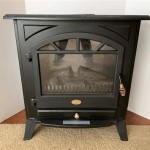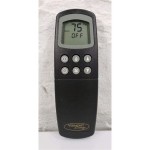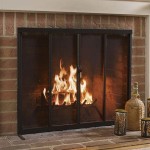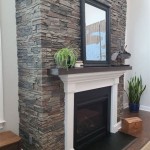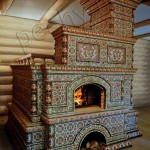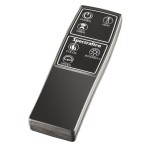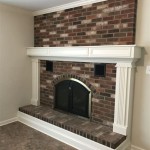```html
How to Remove Temco Fireplace Doors
Temco fireplace doors are a common feature in many homes, providing a barrier against sparks and embers while enhancing the aesthetic appeal of the fireplace. While generally durable, there may be instances where removal is necessary. This could be for cleaning, repair, replacement, or simple aesthetic modification of the fireplace area. Understanding the process for removing Temco fireplace doors is crucial to avoid damage to the doors, the fireplace surround, or oneself.
The removal process, while generally straightforward, can vary slightly depending on the specific model of the Temco fireplace doors. Therefore, a detailed examination of the doors and their installation is a necessary first step. This includes identifying the type of mounting hardware used, noting any visible screws or brackets, and understanding the overall mechanism by which the doors are attached to the fireplace opening. This preliminary assessment will inform the subsequent steps and ensure a smooth and safe removal process.
Before commencing any physical removal, it is imperative to assemble the necessary tools. These typically include a screwdriver set (both Phillips head and flat head), a socket wrench set, a pair of pliers, and potentially a hammer with a tapping block if any components are stuck. Safety glasses are essential to protect the eyes from debris, and work gloves will protect the hands. Having all these tools readily available will minimize interruptions and ensure efficient progress throughout the removal process.
Key Point 1: Identifying the Mounting Mechanism
The first and arguably most important step in removing Temco fireplace doors is correctly identifying the type of mounting mechanism employed. Temco doors utilize various methods, and understanding which one is in place is critical for a successful and damage-free removal. Common mounting mechanisms include surface-mounted frames with visible screws, hidden brackets secured with screws or clips, and tension-mounted systems that rely on pressure to hold the doors in place.
Surface-mounted frames are the most straightforward to identify. These feature a visible frame that surrounds the fireplace opening and is directly attached to the brick or stone with screws. The screws are usually positioned around the perimeter of the frame and are readily accessible. Removal involves simply unscrewing these screws with the appropriate screwdriver. It is important to use the correct size screwdriver to prevent stripping the screw heads, which can make removal significantly more difficult.
Hidden brackets are a more concealed mounting method. In this case, the frame appears to be attached directly to the fireplace opening without any visible screws. Instead, the frame is held in place by brackets that are tucked away behind the frame. These brackets are typically secured with screws or clips accessible from either the inside or outside of the frame. Locating these brackets may require some careful inspection and potentially using a flashlight to illuminate the areas behind the frame. Once located, the screws can be removed, or the clips can be disengaged to release the frame.
Tension-mounted systems rely on pressure to hold the doors in place. These systems typically feature adjustable rods or springs that exert pressure against the inside of the fireplace opening. To remove tension-mounted doors, it is necessary to release this pressure. This often involves loosening adjustment screws or levers that are located on the frame. Once the pressure is released, the doors can be carefully removed from the opening. It is crucial to proceed slowly and cautiously when dealing with tension-mounted systems, as the sudden release of pressure can cause the doors to spring out unexpectedly.
Incorrectly identifying the mounting mechanism can lead to unnecessary force being applied to the doors or frame, potentially causing damage. Therefore, meticulous observation and careful consideration are essential before attempting any removal steps.
Key Point 2: Removing Screws and Fasteners
Once the mounting mechanism has been identified, the next step is to systematically remove any screws or fasteners that are securing the doors to the fireplace opening. This step requires precision and attention to detail to avoid damaging the screws, the frame, or the surrounding fireplace material.
When dealing with screws, it is crucial to use the correct size and type of screwdriver. Using an incorrectly sized screwdriver can strip the screw head, making it extremely difficult to remove the screw. This can result in the need for specialized tools or even drilling out the screw, which can be a time-consuming and potentially damaging process. Therefore, it is always best to start with a screwdriver that appears to be the correct size and then test it on a screw in an inconspicuous location to ensure a snug fit.
If a screw is particularly difficult to remove, avoid applying excessive force. Instead, try applying penetrating oil to the screw head and allowing it to soak for several minutes. This can help to loosen any rust or corrosion that may be binding the screw in place. Alternatively, a screw extractor tool can be used to remove stripped or damaged screws. These tools work by gripping the screw head and providing additional leverage for removal.
In some cases, the doors may be secured with fasteners other than screws, such as clips, brackets, or pins. The removal process for these fasteners will vary depending on their design. Clips may need to be pried open with a flathead screwdriver or pliers, while brackets may need to be unhooked or slid out of place. Pins may need to be pushed or pulled out of their sockets.
As screws and fasteners are removed, it is advisable to keep them organized in a container or labeled bag. This will make it easier to reassemble the doors if they are being reinstalled later. Additionally, it is helpful to take photographs of the door's mounting configuration before disassembly. This can serve as a valuable reference during reinstallation, ensuring that all components are correctly positioned.
Key Point 3: Addressing Stuck or Corroded Components
One of the most common challenges encountered during fireplace door removal is dealing with stuck or corroded components. Over time, screws, brackets, and other hardware can become corroded or seized, making removal difficult. Attempting to force these components can result in damage to the doors, the fireplace, or the tools being used.
Penetrating oil is an invaluable tool for addressing stuck or corroded components. Applying penetrating oil to the affected area and allowing it to soak for a period of time can help to loosen rust and corrosion, making it easier to remove screws or other fasteners. It is important to use a penetrating oil specifically designed for loosening rusted parts, as these products contain solvents and lubricants that can effectively break down corrosion.
If penetrating oil alone is not sufficient, applying heat to the affected area can also help to loosen corroded components. A heat gun or hair dryer can be used to gently warm the area around the screw or fastener. The heat will cause the metal to expand slightly, which can help to break the bond between the corroded parts. However, it is important to exercise caution when using heat, as excessive heat can damage the doors or the surrounding fireplace material.
In some cases, tapping the stuck component with a hammer and tapping block can help to loosen it. The vibrations from the hammer can help to break the bond between the corroded parts. However, it is important to use a tapping block to protect the doors and the surrounding fireplace material from damage. A tapping block is a piece of wood or plastic that is placed between the hammer and the component being tapped. This will help to distribute the force of the hammer evenly and prevent damage.
If all else fails, specialized tools such as screw extractors or bolt cutters may be necessary to remove stuck or corroded components. Screw extractors are designed to grip and remove stripped or damaged screws, while bolt cutters can be used to cut through severely corroded bolts or rods.
When encountering stuck or corroded components, patience and persistence are key. Avoid using excessive force, as this can lead to damage. Instead, try a combination of penetrating oil, heat, and tapping to gradually loosen the affected parts. If necessary, consult with a professional for assistance.
Once all screws and fasteners have been removed and any stuck components have been addressed, the Temco fireplace doors should be free to be carefully lifted away from the fireplace opening. It is advisable to have a second person assist with this step, especially if the doors are large and heavy, to prevent accidents and ensure a smooth and controlled removal. After the doors are removed, the fireplace opening should be thoroughly cleaned to remove any debris or residue left behind. This may involve sweeping, vacuuming, or wiping down the surrounding area with a damp cloth.
Finally, it is recommended to store the removed Temco fireplace doors in a safe and secure location to prevent damage. If the doors are being reinstalled at a later date, it is important to protect them from dust, moisture, and other environmental factors that could cause corrosion or deterioration. Wrapping the doors in plastic sheeting or storing them in a climate-controlled environment can help to ensure their longevity.
```
How To Remove Fireplace Doors And Frame

The Ez Door For Temco Fireplaces Fireplace Home Renovation

How To Remove Fireplace Doors And Frame

How To Remove Fireplace Doors And Frame

How To Remove Fireplace Doors And Frame

How To Remove Prefab Fireplace Doors

Matte Black Temco Fireplace Door For Gc36

Matte Black Temco Fireplace Door For Tch4429

The Ez Door For Temco Fireplaces Fireplace Home Renovation

Brushed Satin Nickel Temco Fireplace Door For Tbf42 2 3 Tbst42 Tcst42
Related Posts

